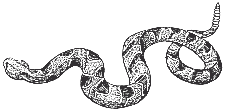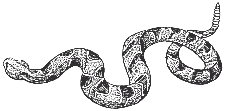EV WARE – EVOLUTIONARY SIMULATION

Introduction

Leon Brillouin, an early pioneer of information theory, writes [1]
The [computing] machine does not create any new information, but it performs a very valuable transformation of known information.
A supporting statement made more recently by Christensen and Oppacher [2], is that conservation of information (e.g.. the no free lunch theorem) in computer simulation, especially in evolutionary computing [3, 4, 5], is
… very useful, especially in light of some of the sometimes-outrageous claims that had been made of specific optimization algorithms
An example is the computer program dubbed ev [6]. Using evolutionary programming with a reference to DNA, ev purports to:
- show “how life gains information.” Specifically “that biological information… can rapidly appear in genetic control systems subjected to replication, mutation and selection.”
- illustrate punctuated equilibrium: “The transition [i.e. convergence] is rapid, demonstrating that information gain can occur by punctuated equilibrium.”
- disprove “Behe’s [7] definition of ‘irreducible complexity’ … (‘a single system composed of several well-matched, interacting parts that contribute to the basic function, wherein the removal of any one of the parts causes the system to effectively cease functioning’.) “
These claims are contrary to Brillouin’s initial insight. The Ev Ware Simulation shows Brillouin to be correct. Indeed, the claims of ev exemplify seductive semantics characteristic in some areas of computational intelligence [8] wherein results of computer programs “are interpreted too literally, resulting in meanings being inferred that are more profound and important than warranted.” [9].
We begin with a high level description of ev and the Ev Ware Simulation. A more detailed analysis corroborating the performance of the simulation is available [10].

Random Search for the Output Target
I flip a coin 130 times and record each outcome as a one for heads and zero for tails. I now have 130 bits (zeros and ones) and ask you to guess them. When you give me your 130 bits, I compare them to mine and respond “yes” or “no” as to whether they match. You are doing a random undirected search. The probability of you randomly identifying the specific sequence is one chance out of
1,361,100,000,000,000,000,000,000,000,000,000,000,000.
On the Ev Ware Simulation you can search for a string of ones and zeros using a random undirected search. To simulate flipping a coin 130 times, choose Random Binding Sites on the Target Type menu.

Each simulation chooses a different set of coin flips. On the pull down Algorithm menu, choose Undirected Search: Random Output.

Click on Start Search (Auto):

The search then begins. You will see rows of ones and zeros that look like this.

The grey and white row of ones and zeros on the bottom is the target. These are coin flips you are trying to guess and, as the search continues, they remain the same. The top blue and white row of ones and zeros is your guess of the target. In essence, to make a guess in Undirected Search: Random Output, you flip a coin 130 times to generates 130 bits and ask if your string of ones and zeros is identical to the target. If so, the search has been completed successfully. If not, you try again with 130 more coin flips. The blue and white row of ones and zeros continually changes as we try to find the target.
But don’t wait for the Ev Ware Simulation to give you the right answer. If you made one trillion guesses per second (and the simulation is far from this fast!) it would take you, on average, 12,566,000,000,000,000,000 (twelve and a half quintillion) years to find the target. This assumes you never ask the same question twice.
This is why ev looks so spectacular. The ev evolutionary search algorithm finds such a target against what looks like miniscule odds! This looks like creation of a lot of information by evolutionary programming. As we will show, this is far from being the case.

The Digital Organism
To find a specified target, the ev search uses a chain of A,C,G,D nucleotides found in DNA. Since there are four possible nucleotides in each position, each is assigned a number (in base 2 or as a location index) as A = 0, C = 1, G = 2, and T = 3. Some of these numbers are used as input values. Others are used as parameters in what we will call a number cruncher. Here is an illustration.

Figure 1. The structure of a digital organism in ev.
The number cruncher takes the input, crunches it, and spits out a sequence of ones and zeros. Ones correspond to binding site location and zeros to a non-binding site. The digital organism contains a Hamming oracle that compares the computed output (what we get) to the desired target (what we want) and tells us how many of the bit pairs do not match. This difference is dubbed the Hamming distance. For example, the Hamming distance between the string 000 111 011 and 001 110 101, is 4. (An example Hamming error from the Ev Ware Simulation is discussed in Sidebar 1.) All of this constitutes the digital organism pictured in Figure 1.

In evolution models, there is survival of the fittest. For the digital organism, the lower the Hamming distance, the better the fitness. The smaller the Hamming distance, the closer the output is to the target. Using the structure of the digital organism in Figure 1, our job is to find the target as quickly and efficiently as possible.

Sidebar 1: Here is an example from the Ev Ware Simulation that illustrates the Hamming distance between the target, shown in gray and white, and the output shown in blue and white. There are five rows. The ones differ from the zeros in 20 places. The Hamming distance is thus 20. In the figure, this is shown as Error Count: 20
The Rules
The rules of our game are simple. We pretend we do not know what the target is. We only know the Hamming distance (or as it is referred to on the simulation interface, the Error Count.) Using only this information, our job is to construct an output that matches the target. The game is won when the Hamming distance is zero and the output and the target are the same.
The ability of ev to find its target in much less that twelve and a half quintillion years is not due the evolutionary program. It is, rather, the active information [3] residing in the structure of the ev digital organism that allows one to find string of nucleotides that gives an output that matches the target. Active information can be defined as any structure or procedure that aids in finding the target. For the ev structure shown in Figure 1, there are two major sources of active information: the Hamming oracle and the structure of the number cruncher.
The search rules allow us to use any part of the original ev structure to find the unknown target. We are allowed to change any nucleotide in the digital organism including the input and nucleotides that effect the number cruncher. Like ev, we can also use the Hamming oracle. We can also choose to not use part of the available ev structure.
There are many strategies to search for the target using the same tools used by ev. Some are better than others. The better procedures, much better than the evolutionary search used by ev, illustrate the enormous active information provided by digital organism structure – especially the Hamming oracle.
We will show that the ability of ev to find its target is not due to the evolutionary algorithm used, but is rather due to the active information residing in the digital organism. This active information was provided by the designer of the computer software.

Targets
There are many targets of ones and zeros we can use. The ev program uses the sparse pattern of ones in a sea of zeros shown in gray and white in Sidebar 1. We can alternately choose a target of all zeros, or we can choose the target randomly using simulated coin flipping. Here is what the target choices looks like in the Ev Ware Simulation.
